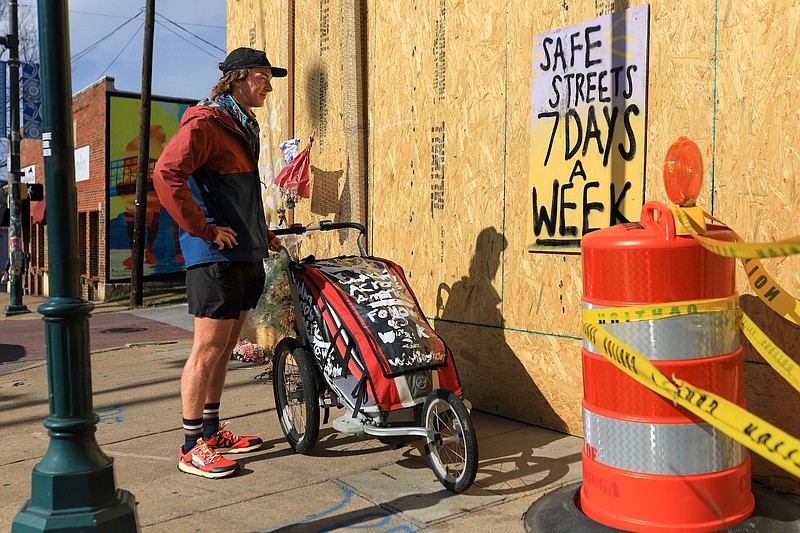A few weeks ago, the City of Chattanooga put out a public survey presenting two options for the redesigning of Frazier Avenue, asking for feedback. The proposed redesigns aim to fix well-known problems with pedestrian safety on Frazier. We at Strong Chattanooga want to briefly present an overview of and some of our opinions on the proposed options:
› Option A: Would reduce Frazier Avenue to two travel lanes and a center turning lane. The travel lanes would have "share the road" markings (a.k.a. "sharrows") indicating that the road is for both bicycles and cars, while showing cyclists travelling in the road where to ride to stay to the right and out of the "door-zone." Option A would provide on-street parking on both sides of the street and would include slightly wider parking lanes than are currently available. The proposal would also establish a sidewalk buffer zone of about 7 feet in width at its narrowest points, which would have the legal status of a sidewalk while being available for use as space for streatery (outdoor dining seating, etc), public art and other improvements.
This option retains on-street parking on both sides of the street and provided a wide buffer zone between the street and curb as an extension to the sidewalk. Bicycles and cars would share the travel lanes. Eight additional parking spaces compared to the current design.
› Option B: Would also reduce Frazier Ave to two travel lanes and one turning lane, with on-street parking on the north side of the street. Instead of "sharrows," where bicycles and cars share the lane, Option B provides a separated, potentially protected two-way bike lane on the south side of the street. The proposal also includes a separation of three to eight feet between the road and the bike lane(s) as well as a similar buffer as described in Option A on the north side of the street. In Tennessee, bicycles enjoy the legal status of vehicles, and cyclists would be able to ride on the street if they prefer to do so (barring an ordinance by the city that prohibits it).
Members of a grassroots organization, Strong Chattanooga, have debated the proposed options and feel that implementing either option would be a win for Chattanoogans that helps address the issue of pedestrian safety on what is currently one of our most dangerous streets. However, a significant but not unanimous majority prefer Option B.
Member Will Temple said he prefers Option B.
"It provides the necessary improvements to pedestrian safety while significantly improving cycling in the area. If we take seriously the idea that the city will not just allow cycling, but actively support making cycling more enjoyable and comfortable, Option B is the option that meaningfully moves towards that future," he wrote on Substack. "Most people, including me, simply aren't comfortable cycling on the road with automobiles under any circumstances ... If there is no bike lane, people will simply cycle on the sidewalks rather than use the shared roads, as they regularly do all over downtown today, which is inconvenient and unsafe for pedestrians."
Highlights of the proposals are:
› Both proposals reduce Frazier to one lane in each direction.
› Both proposals include a new buffer space to keep vehicles away from the sidewalks.
› Option A has bicycles on the road with cars, giving more space toward commercial use of the buffer zone.
› Option B provides a dedicated two-way bike lane on the south side, with street parking only on the north side of the street.
› The difference in available parking spaces between Option A and B is roughly 16 spaces, with Option A having more parking spaces.
Will Temple, a member of Strong Chattanooga, is a resident of the Southside. Strong Chattanooga is an organization of local residents working to improve the city from the bottom up. Contact him at will@wtemple.net.
